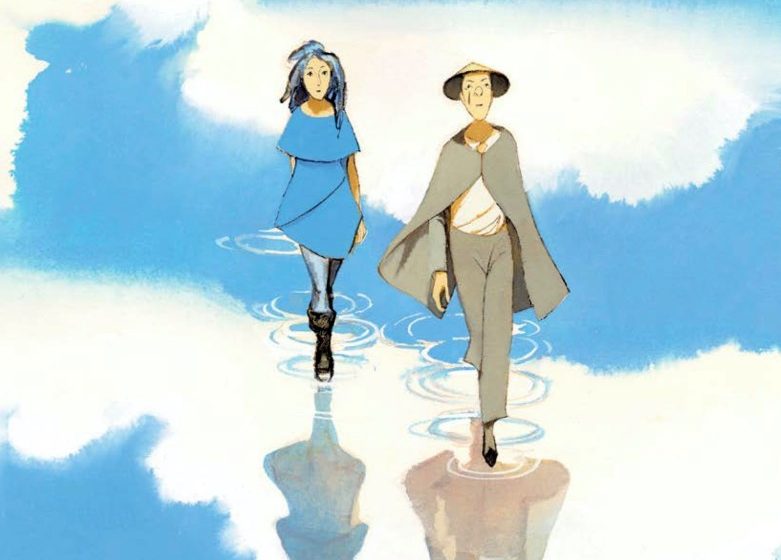In Celestia, an entire quiet and rich world exists just beyond the panel, some form of society, only seen at a distance. Our story takes place along the fringe of that society, in dark alleyways, flooded passageways, and prostitutes’ apartments. This world is broken, and the why and how of it all is never fully given to us; it’s the journey of discovery for those answers that seems more important.

Celestia is a book that is uninterested in telling you anything about itself, preferring instead to sink you into atmosphere and context clues. It’s a world where telepathy exists, but it’s a rare gift among the young survivors of an island city. The city is populated by secret groups with psychic codewords and mysterious intentions, masked ruffians, and penitents in lip-secured masks meant to ensure their vows of silence. None of these things are expressly given to the reader by way of exposition and are therefore somehow more rich in their presence; with no hand-holding, the world seems more honest and true to itself.

Our protagonist, Pierrot, is a rogue telepath, street- (and gondola-) wise, seemingly more tapped into the society of Celestia than his traveling companion, Dora, whose stress is setting off her particular brand of dream-and-memory based telepathy. An escape — from those masked ruffians, from the confines of their island— seems in order, and so they set off to the old world, where massive, brutalist structures house the lost fractions of a humanity that has lost its memory and purpose.

What sings in Celestia is Manuele Fior’s incredible artwork, which feels as if it was cobbled together from Impressionist canvases. Each page has a feeling of being influenced by early 20th century paintings — so much so that Belgian painter Paul Delvaux is name-checked in the first quarter of the book. This feeling of reading something steeped in art history and aesthetics further blends a sense of a fully realized world with a sense of weighty importance, as if the story has been loaned a museum-quiet gravity.

That there are full-page spreads that feel as if they would look at home on canvas, hanging in a wing of some European art museum means that this book feels more visually striking than its peers in graphic novel sections of bookstores. There isn’t anything that feels this way, that exudes this sort of confidence.

Furthermore, because there is a sense of timelessness to the book, we take the narrative as being told to us by someone of authority, of historic import. We believe in the narrative as something powerful, the characters as beloved. Though the book doesn’t spoon-feed the reader anything — indeed, it avoids answering any resolute question — we understand the world and its relationships as concretely considered and understandable. It’s a feat of aesthetic that makes the book stay with the reader long after it’s over, trying to work out connective tissues between its fantastic, quiet, and modern concepts.

The result is not only a truly unique dystopian world, but a truly unique and sophisticated comics experience.
Join the AIPT Patreon
Want to take our relationship to the next level? Become a patron today to gain access to exclusive perks, such as:
- ❌ Remove all ads on the website
- 💬 Join our Discord community, where we chat about the latest news and releases from everything we cover on AIPT
- 📗 Access to our monthly book club
- 📦 Get a physical trade paperback shipped to you every month
- 💥 And more!













You must be logged in to post a comment.